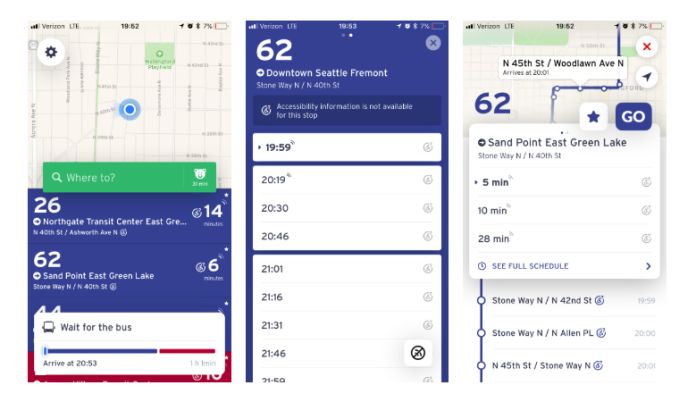Transit App users will find that the aptly named mobile navigation app has graduated to version 5.0. The milestone version is noticeably different from its predecessors. One of the chief changes is in the search functionality which is simpler, more intuitive, and faster than before. The app developers have also reduced the need to jump between screens for trip planning information through targeted consolidation of information. In short, the update is heavily focused on streamlining various functions for users.
Predictive journeys and simpler search
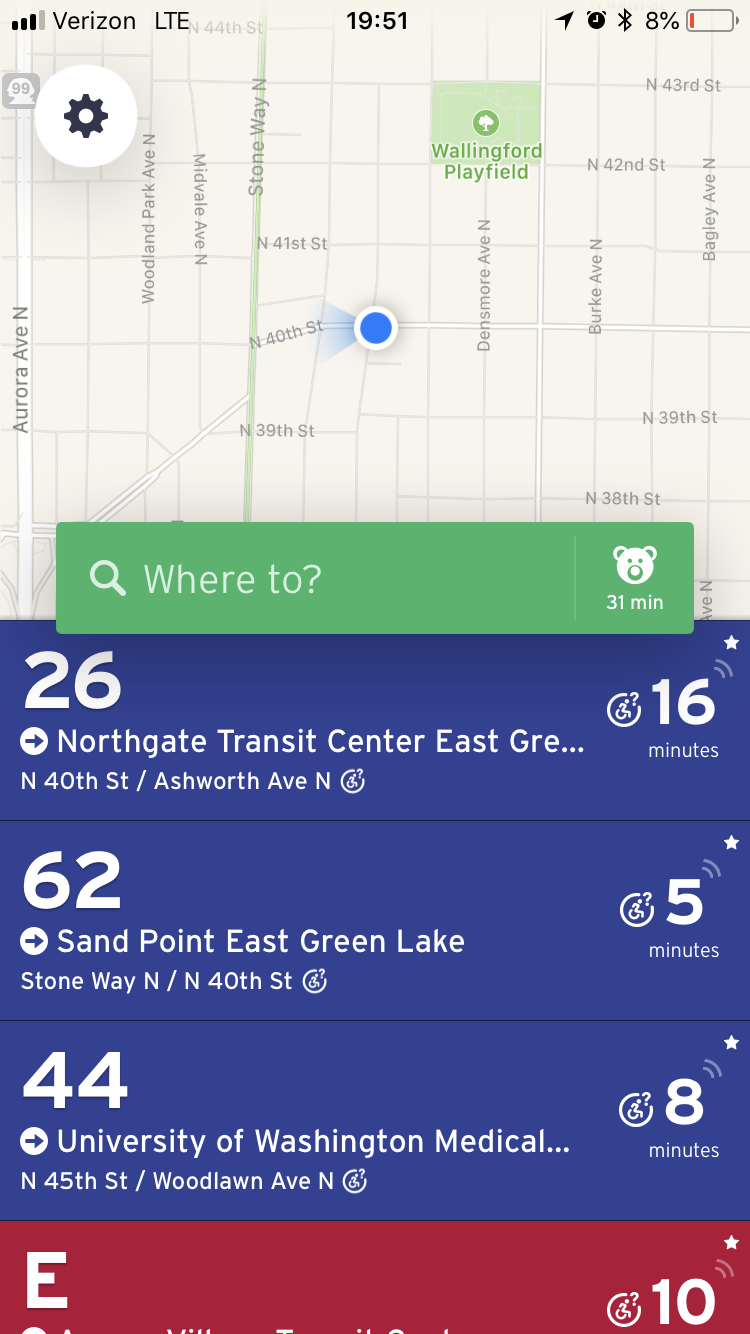
One of the obvious changes that users will notice is the search functionality, which has been placed near the nearby routes pane. This removes the search bar from the top of the main screen. A green search bar function is now supposed to be predictive offering a one-tap capability on the right of the search bar to take you to a usual destination, including saved favorites. Alternatively, users can type in their destination in search bar or simply pan on the map to their desired destination. Panning to a destination will turn the search bar purple and users can tap on it determine the best options in the trip planning screen.
Either scenario will instantly provide a trip time estimate in the search bar without having to see actual route options. A thing to note about this feature is that it always assumes transit trip times, not alternatives like walking, biking, or ride-hailing which are shown in trip planning screen. So it will provide a quick overview on what to expect without getting to far into the trip planning process.
When panning around, users can get back to their exact location by simply pressing the “X” circle on the search bar. There are several other great features of the search bar that users will note even without jumping to an assumed destination. Typing in route numbers will present options to trip plan and tapping on the center of the search bar will reveal recent searches and alternative favorite destinations in lieu of typing a specific address or place.
One screen to rule them all
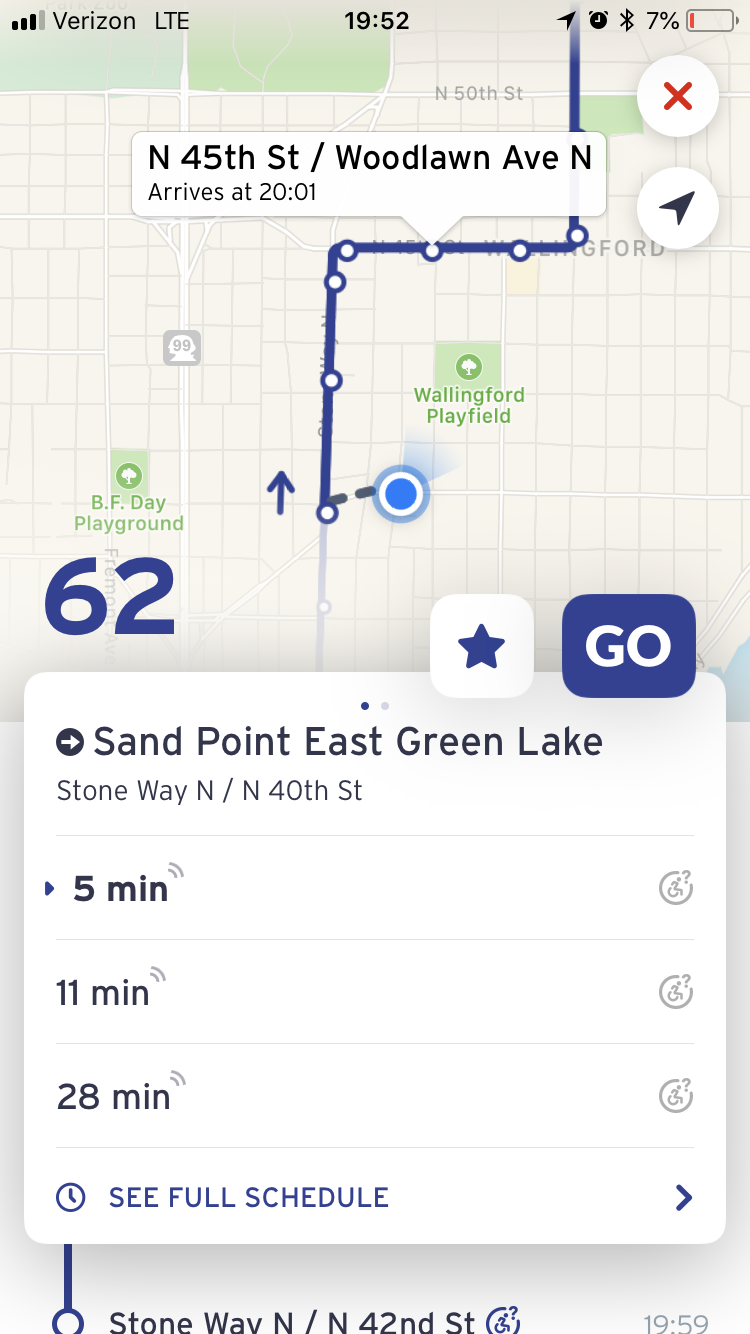
The new route-level screen. (Transit App) 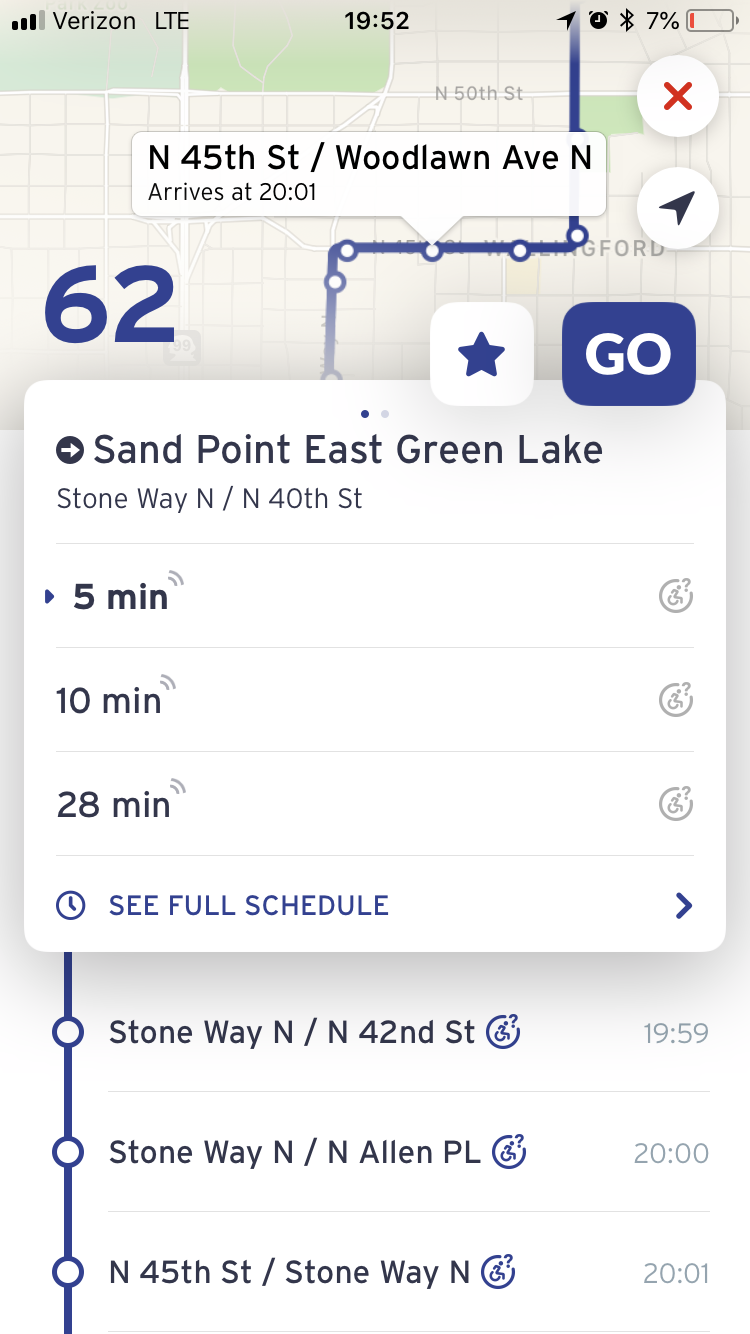
The new route-level screen. (Transit App) 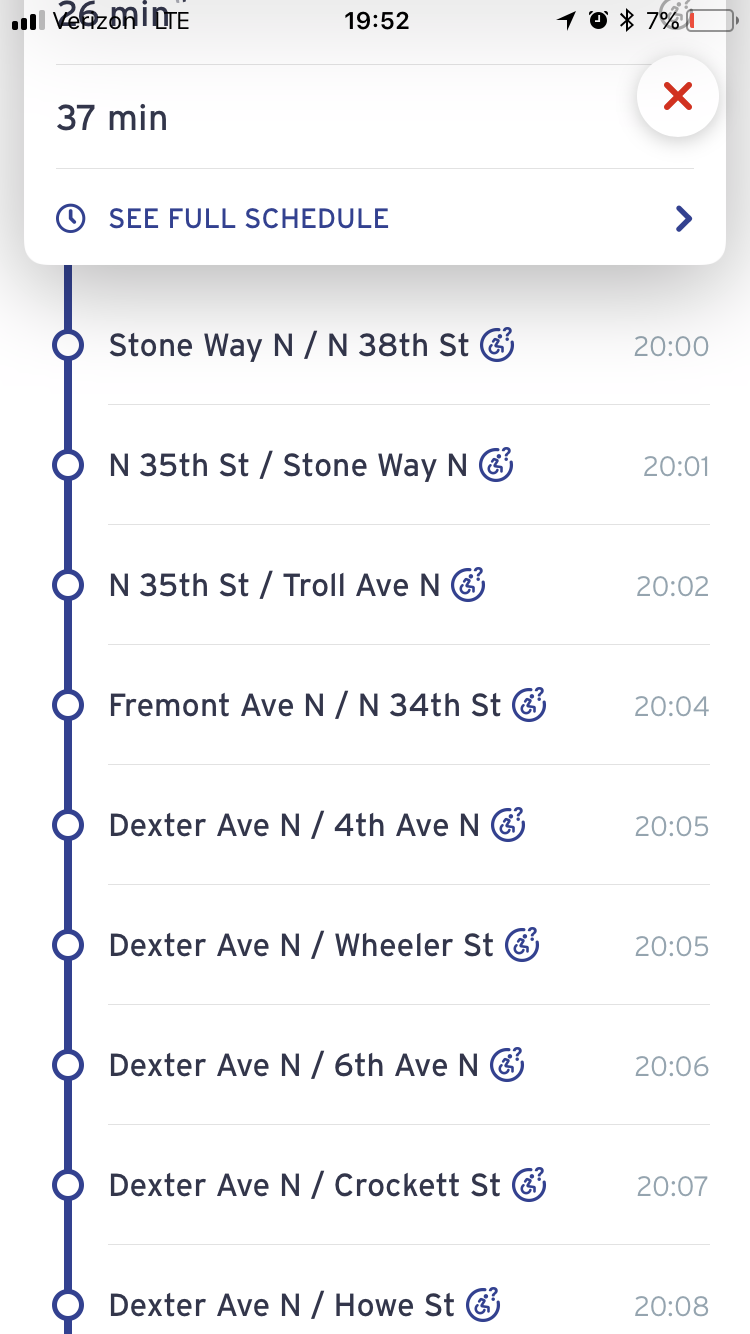
The new route-level screen. (Transit App)
From the nearby trips pane, selecting individual routes is a little different. Tapping on a route no longer reveals the next few trips on the same screen (unless it is a branch line). Instead, Transit App has radically simplified things with a one-stop-shop window that pop opens when tapping on a specific route. This new window will show the route’s alignment, subsequent stops, any active nearby bus or train on the route, and next trip options. A detailed schedule window can be toggled from the screen or users can see the estimated time to subsequent stops on the next trip. Additionally, users can directly activate the revamped “Go” mode and favorite the selected route.
Step-by-step navigation gets better
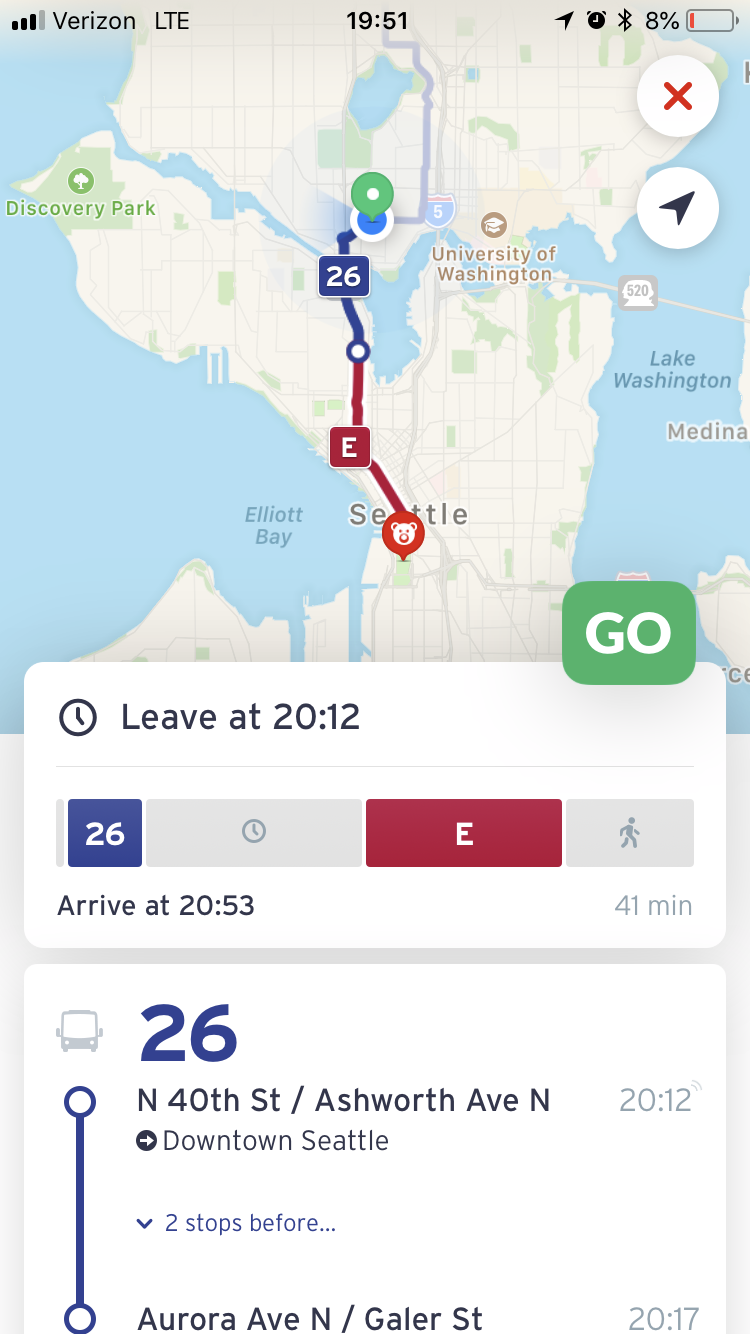
The new “Go” mode. (Transit App) 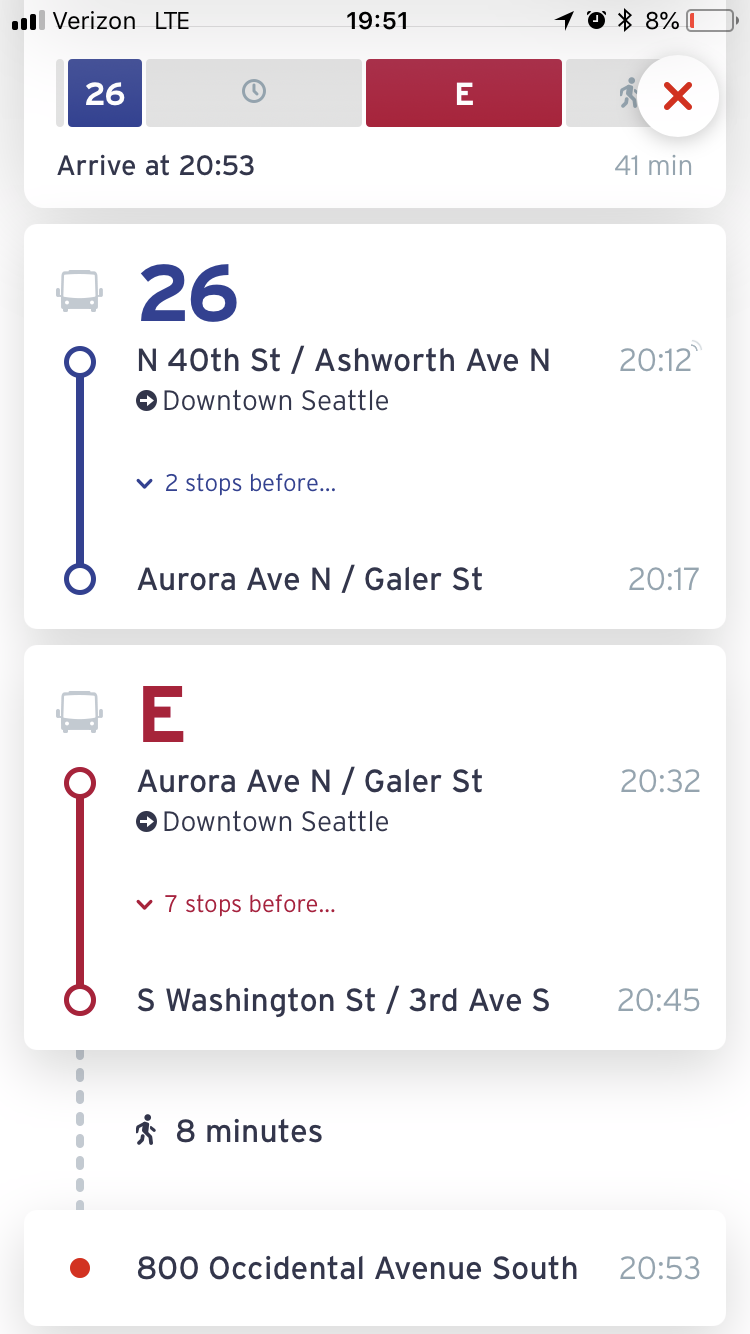
The new “Go” mode. (Transit App) 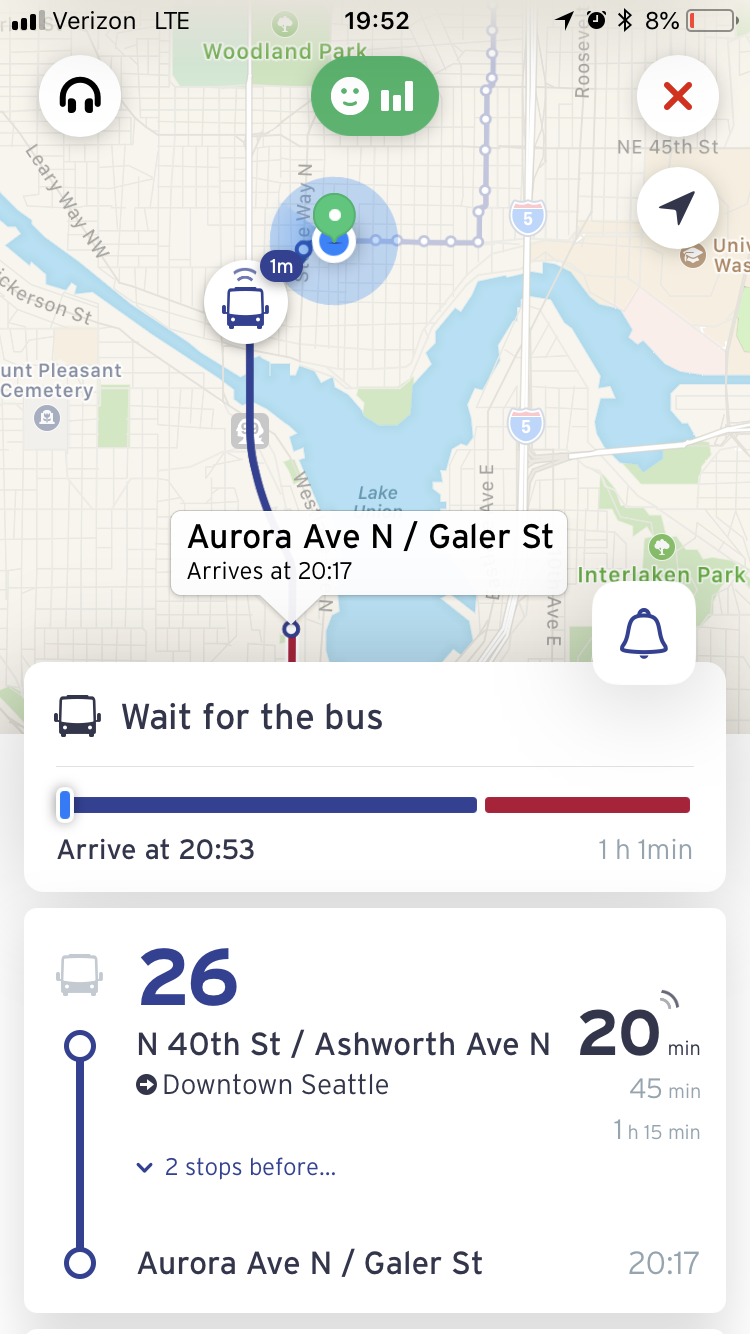
The new “Go” mode. (Transit App)
The “Go” mode got some new bells and whistles, but still functionally allows users to know when a bus or train will arrive at their stop. Users will note that the “Go” mode provides a plethora of unique features to set a reminder so as know when to begin walking to the stop and increasing the estimated walking time based upon one’s own capabilities. Users can then remain in the “Go” mode to track and navigate their whole way through their trip. This is most useful for those unfamiliar with their surroundings, making connecting trips, or snoozing on the ride (don’t miss your stop!)
A big improvement on this version, however, is the ability to go back the main screen even with “Go” mode activated and seeing a live tracker of progress to one’s chosen destination. This can be achieved by swiping down on the activated countdown bar.
Generally speaking, other functionality of the app remains the same, but long-time users will notice aesthetic changes to the app like the location of the settings button and tilt shift blur at the edges of the map. The updated app, however, has temporarily lost connections to private bikeshare and carshare data in Seattle. Developers report that this should be restored soon.
Stephen is a professional urban planner in Puget Sound with a passion for sustainable, livable, and diverse cities. He is especially interested in how policies, regulations, and programs can promote positive outcomes for communities. With stints in great cities like Bellingham and Cork, Stephen currently lives in Seattle. He primarily covers land use and transportation issues and has been with The Urbanist since 2014.

